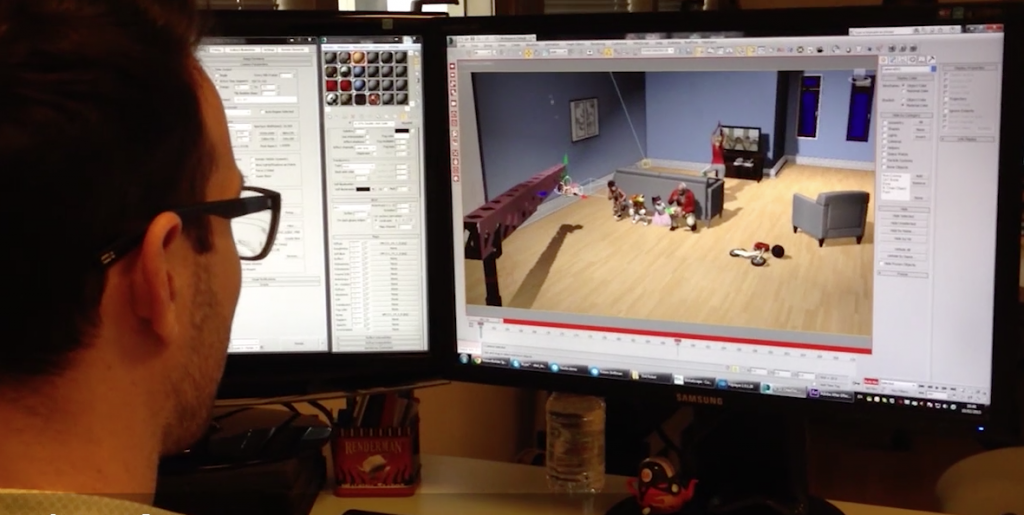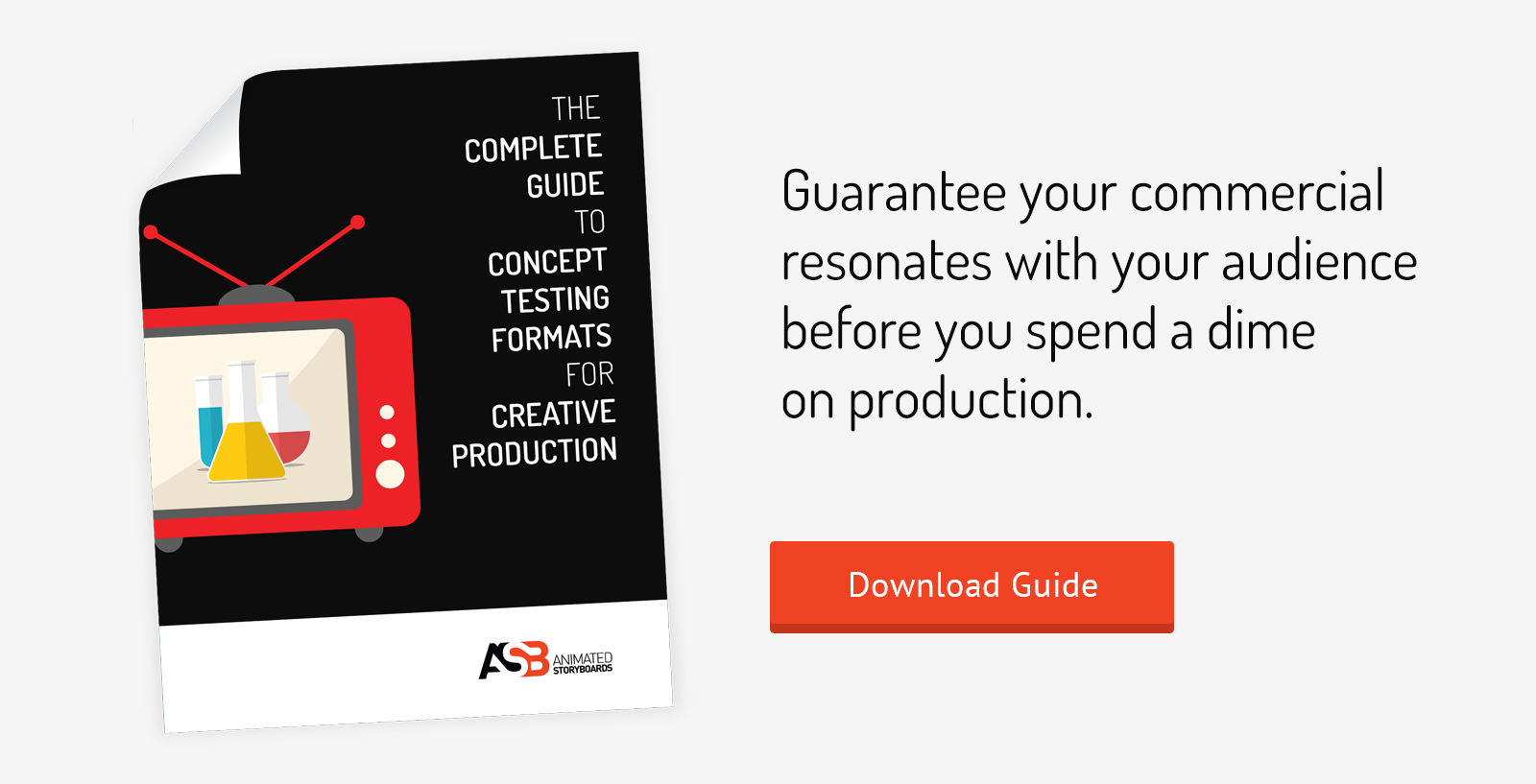
Comparing an animatic to a previsualization, also called a “previs” or “previz,” is a lot like comparing apples to oranges. While they belong to the same general family, they are very different—and each has its own uses and benefits.
Sometimes, we hear people use the terms interchangeably: We may have a client call and say they want previs, but what they really want is an animatic. So, what’s the difference between previs and an animatic, and why does it matter?
Previs
Previs is a technical service typically done in 3D that allows a production team (including the producer and director of a film, commercial, or TV show) to realistically lay out or visualize the scenes in a way that technically makes sense. For example, a production team can use a 3D previs to map out a complex camera move so they can see how they can make the shot happen before they have to do it on camera.

In the realm of pre-production (often called “pre-pro”), a previsualization is used pre- pre-pro—that is, before production even begins. During this stage, previs is used to figure out and test a project’s idea, including a concept, an unfinished script, information about where and how a camera moves in space, how a shot is best laid out, and how it can be executed in real life.
Here are some key features of a previs:
- Previs is more focused on the technical aspects of a shot and less focused on aesthetic details and narrative flow.
- Previs can be more simplified and stripped down to focus mainly on how things are moving and the composition of shots.
- Previs is something a director of a live-action commercial or movie would ask for.
- Previs is a more detailed plan (think blueprint) for a director and producer to take and use on set. Previsualizations are incredibly valuable because they help make sure the producer and director are working as efficiently as possible on the shoot. They can check the full-up shot-by-shot against previsualization to make sure every frame looks like it should.
- Here’s an example of a previs for Jever.
Animatic
An animatic is a way to layout the narrative or creative concept that will be used to measure the effectiveness of the story itself. An animatic is traditionally used to test commercial ideas in focus groups before the idea is fully produced, but can also be used for film and television.

Here are some key features of an animatic:
- In animatics for commercials, their is greater concern for aesthetics, such as the environment, wardrobe, and “look and feel” of a visual story.
- Commercial animatics are created for ad agencies and brands—they may be requested by the brand (the client) in order to prove the success of a concept.
- Animatics can also be used in film and TV to visualize an idea in a simplified form. Traditionally, animatics for film and TV have little to no animation, and use simple editorial and sound design to visualize the full construction of the show or film.
- Here’s an example of an animatic for Pepsi.
Previs vs. animatic: What are you looking to achieve?
While both previs and animatics act as a sketch board tool for teams to figure out how to lay out ideas in a movie format, they are suited to different industries and have different strengths. Animatics are more about the narrative and the success of a creative idea; previsualizations are more about the technical details of how a shot can be done in live action or VFX.
Bottom line, if you’re looking to bring a creative idea to life to show a client or focus group, that’s an animatic. If you want to create a spot that will be a technically accurate exploration of a production, that’s previs. We can help you decide which is best for you. Give us a call today!

